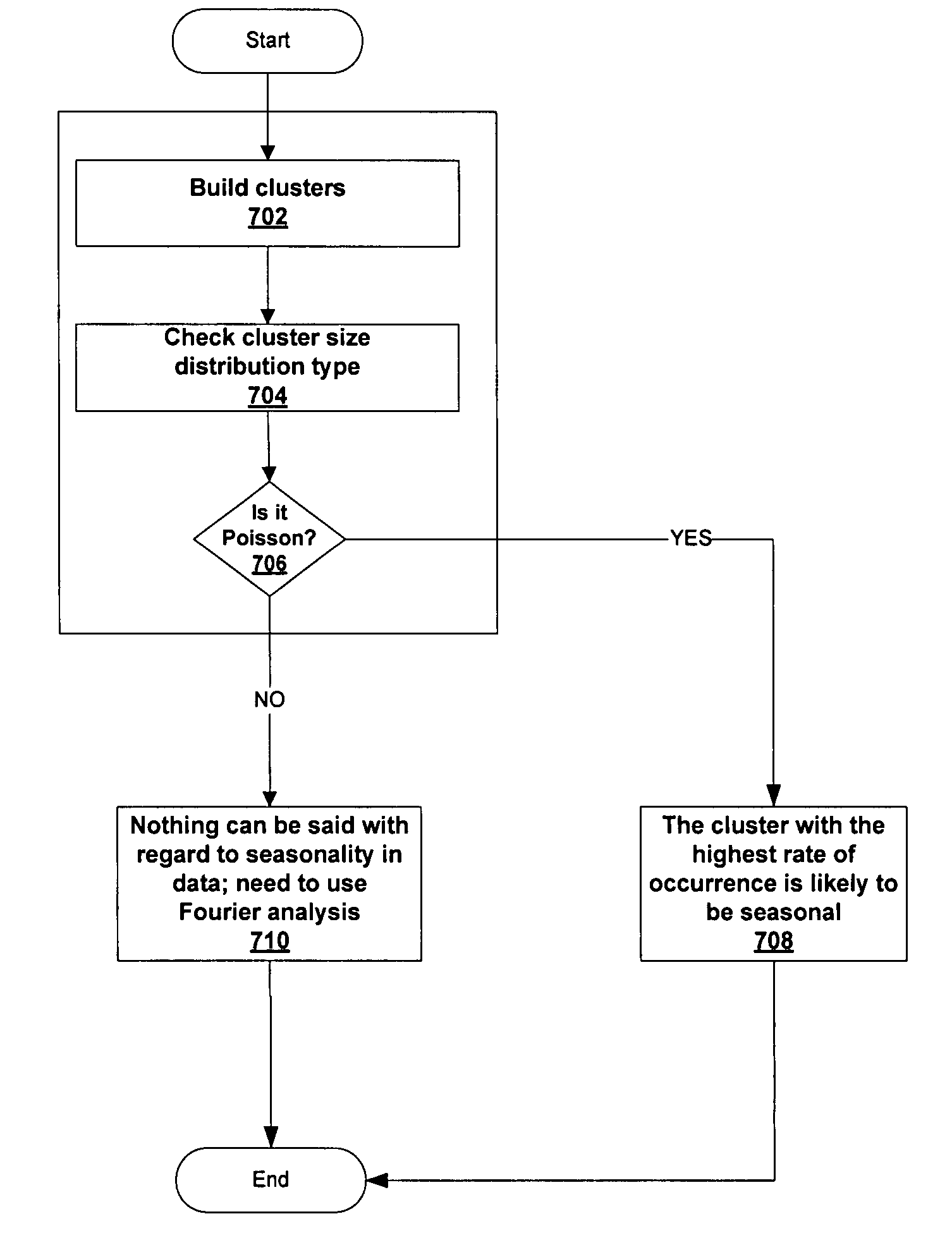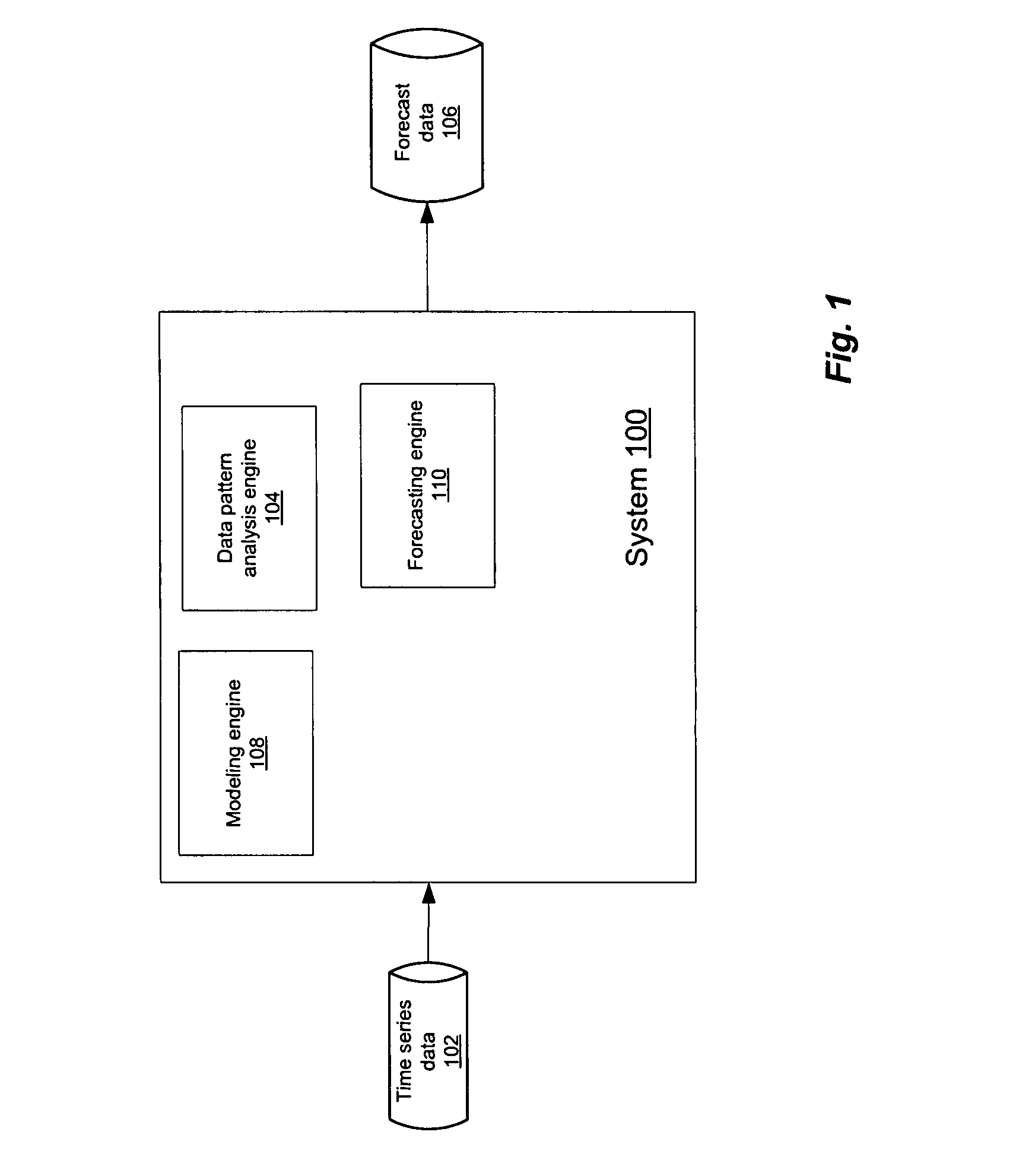Computer storage capacity forecasting system using cluster-based seasonality analysis
a cluster-based seasonality analysis and forecasting system technology, applied in the field of automatic evaluation, can solve the problems of skewing the model's perception of the impact of such events, rendering them potentially meaningless, etc., and achieve the effect of better models and more accurate forecasts
- Summary
- Abstract
- Description
- Claims
- Application Information
AI Technical Summary
Benefits of technology
Problems solved by technology
Method used
Image
Examples
Embodiment Construction
[0031]FIG. 1 illustrates a system 100 for performing data pattern analysis in accordance with an embodiment of the present invention. System 100 receives as input time-series data 102, i.e. a sequence of numbers corresponding to data collected from a system of interest during a time period. Data pattern analysis engine (DPA) 104 analyzes this historical data 102 in order to find and interpolate outliers, identify trends in the data, de-trend the data, and find seasonality in the data, as described further below. DPA 104 then provides this information to modeling engine 108, which in turn generates a forecasting model based on the provided data from DPA engine 104. The model is then provided to forecasting engine 110, in order to generate forecast data 106, which can then be provided to a user. Modeling engine 108 and forecasting engine 110 in one embodiment are the Forecast Pro product, available from Business Forecast Systems, Inc.; in an alternative embodiment they are the Autobox...
PUM
 Login to View More
Login to View More Abstract
Description
Claims
Application Information
 Login to View More
Login to View More - R&D
- Intellectual Property
- Life Sciences
- Materials
- Tech Scout
- Unparalleled Data Quality
- Higher Quality Content
- 60% Fewer Hallucinations
Browse by: Latest US Patents, China's latest patents, Technical Efficacy Thesaurus, Application Domain, Technology Topic, Popular Technical Reports.
© 2025 PatSnap. All rights reserved.Legal|Privacy policy|Modern Slavery Act Transparency Statement|Sitemap|About US| Contact US: help@patsnap.com



